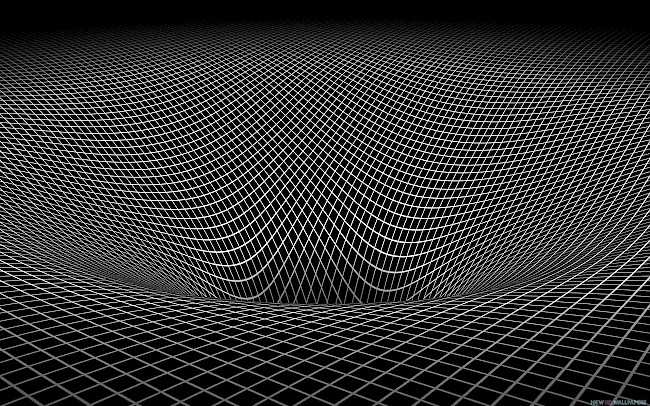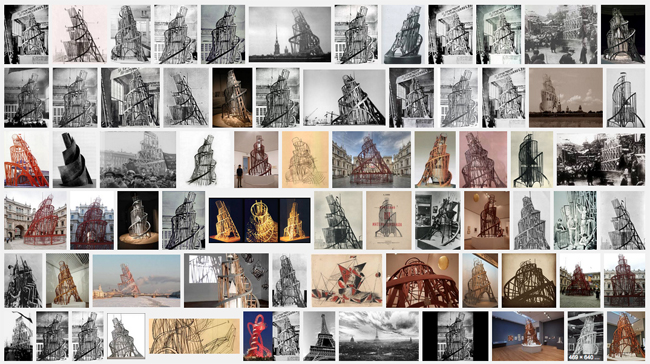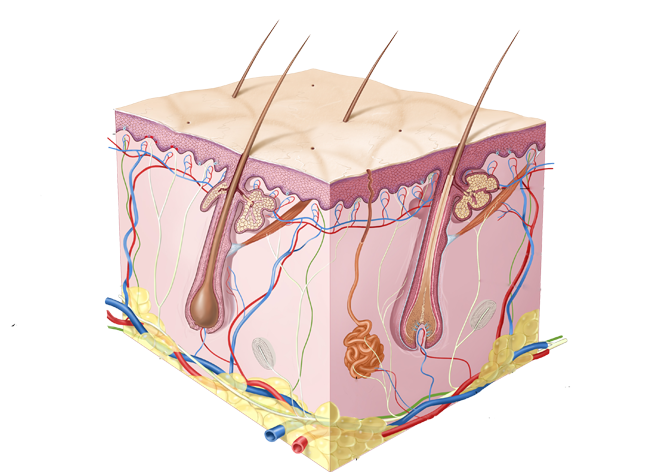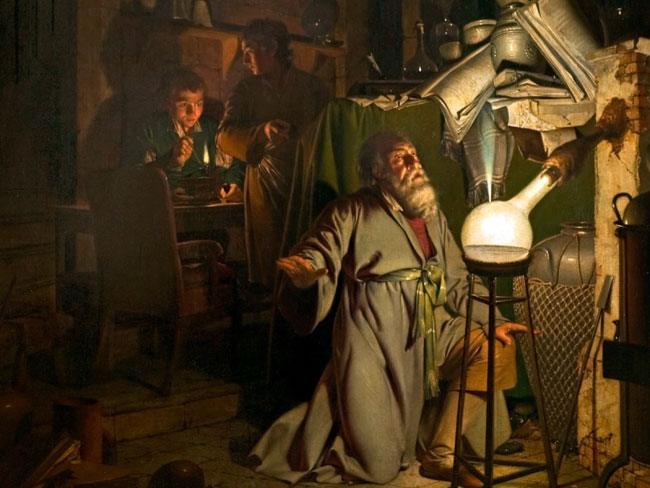— Art After the Machines

This text is brought to you from the intersection of collaboration and hyperstition. What makes this experiment necessary is the severity of the cultural crisis in which art stubbornly refuses to find itself. For art to make sense and to survive the uprooting effects of the escalating cybernetic revolution, it needs to be something other than what it has been. The place to consider the future of art is as much the world of thought as it is the artist’s studio or the gallery.
This project itself could only be possible with the help of computers and social networks, which facilitate multiple dialogues on the same topic from different time zones and geographies. Much like a group exhibition, my role as a curator in constructing this text has been to arrange and connect concepts and propositions in ways that reveal my thought process while leaving space for readers to insert their own.
This text is collaged from social media conversations with Jason Adams, Julieta Aranda, Diann Bauer, Amanda Beech, Zac Davis, Lucca Fraser, Michael Ferrer, Aaron Gemmill, Amy Ireland, Joshua Johnson, Deneb Kozikoski, Suhail Malik, Reza Negarestani, Patricia Reed, Rory Rowan, Daniel Sacilotto, Keith Tilford, and Peter Wolfendale.
1.
If we were to begin with the assumption that art has always existed, and try to explain its givenness, then we would have to create a concept of art that fits within the set of existing artworks and their histories. However, if we instead begin by developing a concept of art as a condition in order to understand whether a new kind of art is possible, then we could very well find out that today, much of what is taken to be art simply isn’t. If we are to hang onto anything that might be called or resemble art, our efforts have to include not only understanding what art is, but also what art does, and even more importantly what it ought to do.
2.
If we take naive humanism as art’s main problem today, then the solution can become a nontrivial one. By removing the diverse and subjective interpretations or experiences of art as its condition of possibility or telos, we can collapse the entire edifice of the dominant art paradigm. However, the problem of the existing human-centered art does not only lie in its variegated interpretation, but also in the relaxation of epistemic standards for the adjudication of its value. Moreover, the problem lies in the short circuit with which the value of an artistic proposal is gauged as being only relative to the artistic act with which it is affirmed and produced.
3.
This is why art as a product cannot have value by itself. To simply assume that any act of creative affirmation by humans is good in itself is precisely what allows the relativist assertion that “everything is art” to never exhaust itself. Art must respond to the problem of enablement, i.e., how the making of artworks enables both the maker and the viewer to think. Thus, art production cannot be merely formal play. “Formalization” involves one’s ability to work within constraints set by the genre, medium, display space, and/or the audience. This has far more import than pure play and experimentation. If anything, rather than being playful in relation to form, art needs to be approached as a strategy of gaming the cogno-sensible topology, or the surface of the work.
4.
Art’s problem cannot be solved at the level of viewing and interpretation. This is because the conceptual import of interpretive practices does not merely occur correlationally from the viewers’ confrontation with a produced work of art, but involves a type of conceptualization that allows a work of art to become possible in the first place. At the level of production, the artist not only utilizes a “technique” in the larger sense of the term, but also introduces sufficient fidelity to maintain certain assumptions. The artist does so in order to maintain the functionality of the work, while speculating on how cognition automatically generates assertions about art’s metaphysical availability to the viewer. The artist begins with a certain set of ideas and access to a level of already produced knowledge, as well as an understanding of how proactive risk-taking opens up the outcome of the artwork to contingency. This type of work is a process and is not that different from, for example, the way high-speed algorithmic trading works.

5.
While art cannot be conceived only in terms of signals, information, language, and rules, it should also not be legitimated strictly through its indeterminate and interpretive bio-phenomenological experience in a designated space called the museum, gallery, or any given public space. Nor can any faith be restricted to the viewer for the artwork’s completion through experience. The future valence of art will depend on its modularity and adaptability to multiple platforms. For art to face the machines, it needs to leave the church of humans and become fully processual and transmittable.
6.
To have conceptual and rational demands from art is to state that whatever value artworks have does not just reside in the conceptually indeterminate notion of interpretation, understood to be exclusively on the side of the subjective act of viewing. Art-making, therefore, must concern itself with the productive intentions of the maker, which one way or another will always be worn like an identity tag on art’s sleeve. To maintain this fine balance means making the functions of the work executable on the level of the surface without succumbing to humanist feedback loops.
7.
On the level of viewership, the social aspect of art operates according to certain constraints such as the spatial and material limits that inform and also constrain its appearance. This is why the art part of art-making must crisscross both the material and social levels of its production in order for it to reasonably assert new rules, or as some might say, have any meaning. Otherwise, what remains for art to accomplish besides habitually assuming its monopoly on certain kinds of social values and operations, like religion or representational politics?
8.
There is a fundamental distinction between two senses of art: a general one, which includes all human activities aimed at new forms of beauty or unconditional and indefinable value—the various media and their historical accretions, such as literature, theater, music, architecture, cinema, games; and a more specific sense, as an identifiable gallery- or museum-based practice that includes various historical performative attempts to break with itself. Most people talk about art in reference to the latter of the two. This limited definition, of course, has little more than historical inertia and economic power holding it together as a concept. Isn’t this why it endlessly invites the relativist wisdom of curators and critics, since it presumes to articulate a motley collection of practices that seem radically variegated in content but are secretly conjoined?
9.
The modern definition of art that privileges its visual character essentializes the historical incident of modern art through museology and photography—two powerful nineteenth-century technologies. They legitimate today’s art through its historical mirror image and the materiality of the ritual called exhibiting contemporary art. The exhibition space imbues artworks with a meta-quality within these secular cathedrals of sorts, conflating works with what we identified above as the general sense of art in order to colonize and lay claim to all other creative practices under the name of contemporary art.

10.
The emergence of a future art will directly depend on two fundamental conditions. First, the art of tomorrow needs to be freed from the shackles of the logic of art history and particularly the long but thick chain that leashes it to modernism. Second, art needs to be freed from serving as the purveyor of meaning, a duty that accompanies this history. These two conditions are needed if we are seeking to secularize art from its domination by humanity. This double liberation does not require the re-elaboration of art’s significance; on the contrary, it requires a form of downgrading rather than elevation. We must begin by asking ourselves: What conditions have made visual arts a concern of Western culture? This question requires us to rewrite the history of the rise of art’s significance in relation to Western thought and philosophy from the prehistoric ages to our own time.
11.
Art’s extraction from its history and ontology is a separation that only loosens its ties to its human past so it can invent today its machinic future. By positing truth, in the future art will be able to maintain its negative condition of skepticism, and simultaneously focus on the positive conditions required to construct new perspectives. However, art cannot rid itself completely of meaning until the emergence of a true form of atheism that negates not only gods but also the vitalism of nature, the human, the material universe, language, and, finally, the machine. Until then, we have to ensure that artists are not the ones intending to produce direct meaning.
12.
We can only carve out a better definition and role for art if we forgo its historical inertia from the twentieth century onwards. This has constituted artists’ obsession with both defining art and transgressing its definition for no other purpose than transgression itself. When combined with the postmodern compulsion for difference, diversity, and multiplicity, this originates nothing other than a catastrophic lack of criteria for making judgments on art and the consequent indeterminacy of contemporary art. This has reduced today’s art practice to redundant affirmative creations: as transgression for its own sake becomes the sole driver, the corollary impulse is the imposition of one’s will over any and all existing constraints. Finally, art becomes an abrupt intervention whose authority and value are endowed automatically in the act of creation—even if, paradoxically, this very occurrence is indexed within its particular history of formal play and transgression.
13.
As an important injunction, we have to avoid the vulgar equation between art and science like the bubonic plague. Today’s art has no direct epistemic effects, or if it does, they are merely contingent. Despite claims about the production of knowledge via qualitative or even quantitative research projects, which might be effective for the purpose of art funding, art today is not directly about knowledge production. In fact, the only way that we might positively recuperate art is by preventing it from masquerading as a form of intuitive knowledge by colonizing all other forms of creativity, including design. The status of each of the visual arts, as they operate today, has to be understood as a species belonging to a wider genus and not the other way around.
14.
There is always a pendular movement between art’s impact on knowledge—its capacity to make knowledge cognizable—and the theoretical and aesthetic blindness of the sciences, which supposedly produce knowledge. Considered as a mode of rationality with a particular way of accessing and manipulating its outer forms and materials, art is then a type of technology searching for solutions to the epistemological shortcomings for which science has no patience. In this regard, art needs to be understood in terms of its intended and unintended cognitive role, and even perhaps its contingent socio-cognitive role within the gated community of art professionals who are the real laborers involved in its social production.
15.
Of course one might argue that contemporary art, in a limited sense, can provide a genuine inter/subjective experience, which may trigger a particular set of reflections, and so therefore it can be engineered to produce certain beliefs or represent certain social standards. However, in the abundance of all other forms of direct and accessible 24/7 media, do we really need art with its professional attire and technical language to create this kind of social construction?
16.
Only from this limited angle might art be integrated within a navigational paradigm of knowledge, escaping the conceptual dead ends fancied by artists who justify the value of their work by comparing it to the use value of science, a path that leads nowhere but down the enchanting Romantic humanist stream. Nowadays a great number of artists claim to be performing the labor of scientists by simply incorporating the result of systematic endeavors within their own production: artists as historians, artists as archivists, artists as social scientists, artists as anthropologists, and even artists incorporating neuroscience, physics, and mathematics, and so on. On the other hand, we should deflate the value of knowledge or even science in its present constitution. This is different from insisting that art cannot produce any knowledge whatsoever. In understanding that not all knowledge is sacred and that art produces no objective knowledge, we can comprehend that art’s cognitive trajectory is dissimilar to the interrogation carried forth by sciences and vice versa. Now, if knowledge becomes just a secondary concern and the focus is instead placed on art as a platform bridging the internality of the art world to its externality, art will then make available different forms of knowledge that science has not and will not be concerned with.

17.
Building a new purpose for art in the twenty-first century begins by downgrading it to a rigorous science of the surface, or the smallest component of what aesthetic theory refers to as form. What is form, if not the interaction and overlaying of multiple topological surfaces? What is form, if not the form that the multiplicity of surface effects place on the surface of perception? As the science of the surface, involved art has to come to terms with its metaphysical deficit and has become creative within its limited superficial resources. This deep science of the surface is the essential component for the construction of a stereoscopic vision of art/science. It involves taking away art’s metaphysical credit cards and forcing it to be resourceful with its own ontology. This is the first step in the long road to art truly becoming the form of thought. For art’s autonomy from science, it has to first become the true master of its own domain. This strategy entails not limiting art to just the local effects of its surface qualities, but using them as a path out of this very locality.
18.
As far as aesthetics are concerned, art nevertheless produces an objective knowledge of surface effects. The skin through which art impacts its surrounding world is where its potential as a platform lies. The reduction of art to this surface level is indeed necessary if we intend to teach and pass on the idea and practice of art to our machines. Consider, for example, the look and feel of fictional worlds and the aesthetics of social insights and interactions. Art can, in such contexts, facilitate access to knowledge for both humans and machines. On this higher level, which unfortunately from our twentieth-century position may in fact seem too low, art can provide modes of compression in form. Good metaphorical examples are: the bar code, the QR code, or even emoticons. The spatiotemporal imitations of these simple forms, which facilitate human-human, human-machine, and machine-machine interaction are not necessarily limiting. Affective optical and sonic exchanges between the cosmos, the environment, and living organisms have always been wireless and quite effective in aiding life. However, this compression must essentially be understood in terms of art’s role in cognitive processes and not as the venerated production of a special kind of hypercognitive luxury product.
19.
With its indirect and silent modes of address, art can help us understand the subtle difference between providing insight and constructing knowledge. Art, like the best kind of philosophy, is no longer “knowledge of” but rather “knowledge of how to do something.” The goal of an artwork can be to help cement a functional cognitive product that is more real than a belief, i.e., an action—not by acting as knowledge, but as the medium of knowledge production. Art, both as an object and process, can become a facilitator of knowledge production, supplying the world with a set of abilities to conceive and move, rather than to promote adherence to or the endorsement of a concept. Through the material capacities of the artwork or the temporal dimensions of the process of its making and display, art can comport intelligence—machinic, human, or both. A type of art as insight and navigation rather than knowledge and belief can also be thought of as an art of epistemic orientation. In conclusion, the production of knowledge is not what constitutes an artwork as such. Art has a cognitive role but should not be thought of as a cognitive product. This, again, suggests a continuity rather than an interchangeability with the idea and practice of science.

20.
A scientific theory can be artistic, but it can’t be soundly scientific if being creative is its sole aim. Similarly, artworks can incidentally “produce direct knowledge,” yet art can’t reliably produce knowledge if doing so is its intended aim. There are unreliable and unsound extremes in both art and science, which effectively define a spectrum that begins with nonsense and ends in propaganda.
21.
In this regard, art’s position is similar to philosophy and can vaguely be considered a type of cognitive philosophical modeling. By enabling the conditions for the production of knowledge—and since art isn’t just the effect produced by the artwork, but is also shaped by a set of normative social practices—art’s infatuation with its own changing definition is extremely tied to its indeterminate subjective effects amongst any number of potential viewers. However, the sociability of art has less responsibility than its material production for its ineffective indeterminacy. Future art could synchronize its material and normative commitments with social commitments, thereby beginning to allow concrete and determinate artistic judgments. This is how the sociability of art can once again become a kind of knowledge that presses forward, rather than being stuck in indeterminacy and whimsy.
22.
The rigorous art of tomorrow must bridge the gap between the sciences and humanities, yet remain on the humanities’ side of the divide. The artificiality of art’s surface can be precisely aligned with the artificiality of pure thought, which has its own open-source and collectively produced synthetic surface. Through this process art can confidently abandon its claims about production and accept its function as it ramifies the limits and possibilities of how we know what we know.
23.
Art, whether artists agree or not, is the void of meaning folded in cognitive wrapping paper, visible only as the surface of cognition and as the materialization of both the historical and semantic emptiness which it carries. It is a series of verifiable claims inserted into the real world and reified to take up the empty space of meaning, a void occupying another void. Contrary to science, which functions as an uneven mediation between what the world is and what it ought to be in favor of the real world, art needs to be thought of as the outer form of both the inner and outer worlds, another mediation between the empirical and the constructed in favor of what the world ought to be. In the unequal conflict between art’s powerful ontology versus its weak epistemological potential, rigorous art always ultimately sides with the latter.
24.
Art needs to be removed from its contemporary ivory tower to deal with the implications of its appearance, but unlike twentieth-century modernisms, today art cannot afford to be solely about the limitations of its supporting material, or only conceived in relation to its own history and ontology. While it's true that art is the forming of information on its supporting material, like a hard drive, computer monitor, or gallery space, we should resist reducing it to, for example, the examination of the effects of light on nano-scale particles and using computers to work out how theses interactions could potentially be useful. We urgently need art today because it can be reconfigured to play a productive role in the reconciliation of human and machine subjectivities. We need art because it is only through art that we might be able to find a nontrivial cybernetic system for reestablishing a shared inhuman ethical foundation. This work cannot be automated and relegated exclusively either to humans or to machines. We ought to fully employ art, before our excessive humanism destroys the possibility of emergence of an ethical AI. We ought to teach our machines how to make and understand art and how its production is crucial in the social process of co-individuation.
25.
In regards to the notion of art as an isolated activity by a single individual, we ought to throw the artist as a precious flower into the compost heap. The reverence of the absolute figure of the artist is a symbolic recognition of the exceptional place of humans in the world. The inhuman essence we share with our machines will continue to resist subjective singularities. Art should be reconfigured to reference that which is produced by and for a collectivity of humans and machines.
26.
Art does not need to worry about an audience. It must begin by knowing that audiences need art more that art needs them.
×
